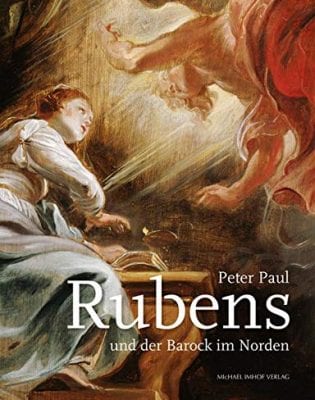The occasion for this exhibition, organized under the direction of Christoph Stiegemann, the actual director of the Erzbischöfliches Diözesanmuseum in the Westphalian city of Paderborn, was the fact that between 1655 and 1661 the brothers Antonius (1625–1691) and Ludovicus (1630–1702) Willemssens from Antwerp had executed three large altars for the choir of the local cathedral. While Antonius painted the altarpieces, his younger brother Ludovicus was responsible for their sculptural framework. Both artists had been entrusted with these prestigious tasks by the then prince-bishop of Paderborn, Dietrich Adolf von der Recke (1601–1661).
This event was of the greatest importance to Paderborn, for thus for the first time since the end of the Thirty Years’ War a truly high baroque art style clearly based on Rubens was introduced in the Westphalian town. Although none of the two Willemssens brothers was, sensu stricto, a Rubens epigone, their imagery is undeniably influenced by the latter’s art. Antonius’s representation of The Birth of Christ, the painting to decorate the high altar, is clearly derived from Rubens through the medium of engraving, while the monumentality, plasticity and realistic expressivity that characterize Ludovicus’s opulent altar frames seem unthinkable without the example of the heroic appearance of the characters in Rubens’s great compositions. Thereby the starting point for Ludovicus Willemsens’s style may have been the sculptural work of Artus Quellinus I (1609–1668), who in his oeuvre tried to reconcile the classicism of his master François Duquesnoy with the more dynamic expressivity of Antwerp’s leading painter. Unfortunately, the impressive altar constructions of the Willemssens brothers do not exist any more. Save a few fragments, they were destroyed by allied bombing in the course of the last months of World War II.
The very impressive and beautifully laid out catalogue is divided into two clearly separate parts. In the first one a series of studies focus on the artistic situation in Antwerp during the Counter-Reformation era and the cultural situation in contemporary Paderborn and northwestern Germany, as well as the connections between both centers. The second part contains the entries of the proper catalogue, grouped more or less around the topics discussed in Part I.
The essays discuss the specific cultural importance of counter-reformatory Antwerp. Nils Büttner’s informative essay on the artistic production in the city seamlessly connects to the article by Birgit Ulrike Münch on the role played in seventeenth-century Antwerp’s artistic life by labor conditions and migration movements. In subsequent essays special attention is given to some specific art forms which were of great importance for the transmission of the “Rubensian” baroque idiom, in which a predominant role was played by graphic art and book illustration. Ursula Blanchebarbe discusses engraving, while Gitta Bertram focuses on Rubens’s role as book illustrator in counter-reformatory theology and liturgy. But the Rubensian idiom was, of course, not only disseminated by prints but also by the plethora of copies of various sizes and prices of Rubens’s compositions. In a well structured essay Justus Lange attempts to categorize these copies on the basis of the Rubens copies in the Gemäldegalerie at Kassel.
The following essays focus on Antwerp’s role as an important center of baroque sculpture, aptly discussed by Frits Scholten, followed by a succession of essays by Jeffrey Chipps Smith, Meinrad von Engelberg, Jürgen Borsch, Tilman G. Moritz, Christoph Stiegemann, Gisela Tilly and Dirk Strohmann, all trying to explain how the “Barockisierung” of art and architecture evolved in Paderborn and the surrounding area. These contributions lead into an essay written in collaboration by Christoph Ehland, Lothar van Laak, Andreas Münzmay, Sabine Schmitz and Johannes Süssmann on characteristics of northern baroque art in general. The last essay by Alma Elisa Kittner deals with presumed baroque aspects of modern art.
In the exhibition itself only a small selection of Rubens’s works was available to represent the art that would become the starting point for the Paderborn and Northwest German Baroque. An important number of these exhibits were oil sketches. Especially, the fine ensemble of four modelli for the lost ceiling paintings of Antwerp’s former jesuit church must have been a true eye-catcher, the more so since these oil sketches are among the most impressive examples of the new dynamism that had begun to characterize Rubens’s style from c. 1620 onward, which would prove so seminal for the further expansion of the high baroque style in northern Germany. The oil sketches are discussed by Nils Büttner who insightfully interprets them in the wider context of the Antwerp Jesuit church as a Gesamtkunstwerk.
The many aspects of counter-reformatory culture in northwestern Germany, of which the new interior decoration of the Paderborn Dom formed only one specific example, were well illustrated by beautiful liturgical vessels and garments, while the Antwerp roots could be clearly understood from well chosen examples illustrating the rich and varied output of Antwerp baroque engraving. The descriptions in the catalogue entries are sound and detailed. In a few number of cases, however, it might have been useful to find somewhat more detailed evidence as underpinning for the attribution, deattribution or dating of certain pieces. A case which especially struck me was that of the wood sculpture representing Honos (cat. no. 93) which so far was rather generally considered to be executed by Hans van Mildert after a drawing by Rubens from c. 1612–15, also shown in the exhibition (cat. no. 92). In his entry the author Léon van Liebergen states that the allegorical sculpture has nothing to do with Van Mildert’s style and should be dated in the eighteenth century. This interesting statement would have been more convincing if the author could have given a more detailed explanation, e.g. by also referring to technological information or a condition report.
Hans Vlieghe
Antwerp, Centrum Rubenianum
